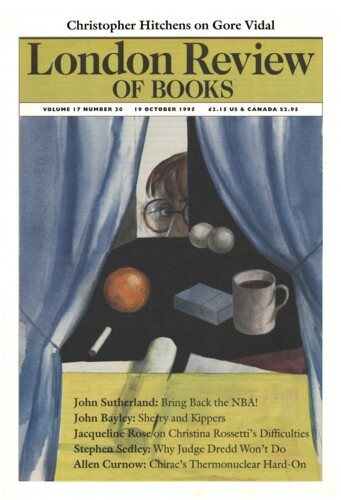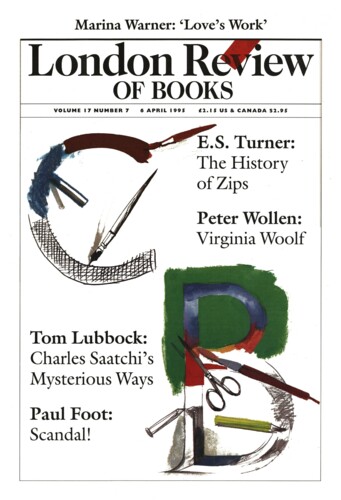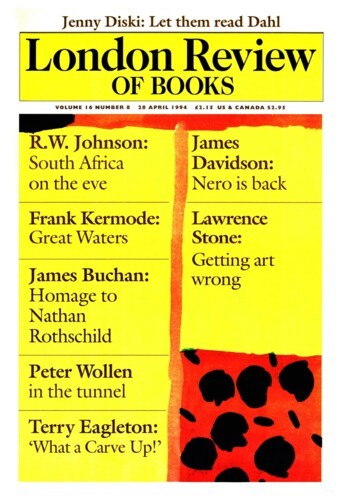Unembraceable
Peter Wollen, 19 October 1995
My first thoughts, in connection with suits, are of Lucky Lucan, Joseph Beuys and the Thin White Duke, at the head of an imaginary horde of accountants, dandies, clubland heroes, zoot-suiters and funeral directors. It has taken me some time to realise that the question of suits is indeed a crucial question, not only about fashion but about sexual identity, national culture and art history. My slow awakening may well be typical. Whatever their knowledge of the great dress designers – from Worth and Doucet through Poiret and Schiaparelli to Westwood and Miyake – I do not think that many people could name a great tailor or men’s clothes designer who flourished before the Fifties, before Brioni and Cardin and Armani succeeded in wresting the hegemony from Savile Row. Yet Savile Row dominated male fashion for more than a century, just as the rue de la Paix has dominated female fashion. Tailors have never been given the credit that has gone to couturiers. They have stayed in the shadows, sitting cross-legged or wielding their tape-measures in traditional obscurity.’




